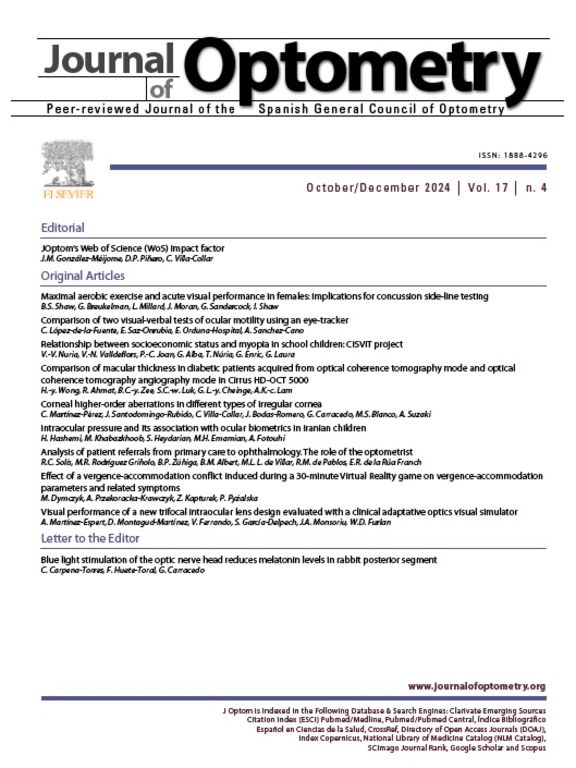In this magazine in October, this article was published: “Agreement between Pentacam and handheld Auto-Refractor/Keratometer for keratometry measurement”,1 this study was conducted in 2015 in Iran, in which 579 right eyes were analyzed. The objective of this study according to the authors was: “we evaluated the agreement and interchangeability of handheld NIDEK ARK-30 and Pentacam systems”, after critically analyzing the article, we decided to present some reflections regarding the statistical errors that prevent establishing agreement Between the methods.
In the article it was calculated: Pearson's correlation coefficient, Student's t-test for paired data and Bland–Altman graphical analysis with 95% agreement limits, only the latter is useful for a concordance analysis between measuring instruments.
The authors realize that despite having high Pearson's correlation coefficients (r>0.9), these do not reflect the agreement between the measurement methods, I quote: “high correlation coefficient does not itself indicate a high agreement between the results of two devices,” but they failed to realize that the statistical analysis was wrong.
In this case, Pearson's correlation coefficient is not an adequate method to assess the degree of agreement between two variables, you can get an r=1, that is a perfect correlation, and despite this the measurement will be biased proportionally, with no agreement between the measurements, therefore, it does not provide information on the agreement between the two measurement methods, but only measures the linear association between two variables. Nor is the Student's t-test for paired data an adequate technique in this type of analysis, this test performs only a comparison of means, without comparing their distribution, which is what matters.
For a concordance analysis, an analysis of the variance must be used, so an ANOVA analysis is used, then based on this ANOVA analysis an intraclass correlation coefficient (ICC) is calculated, this is a parametric test, in the which coefficient estimates the average of the correlations between all possible pairs of observations available, like Pearson's r, this ICC ranges from 0 to 1, this coefficient is used to establish the agreement. The ICC can be assessed as follows: >0.90 very good; 0.90–0.71 good; 0.70–0.51 moderate; 0.50–0.31 slight; <0.30 poor or absent.
Therefore, in this study the opportunity to correctly establish the agreement between both methods was lost, due to a poor choice of statistical analysis methods.







